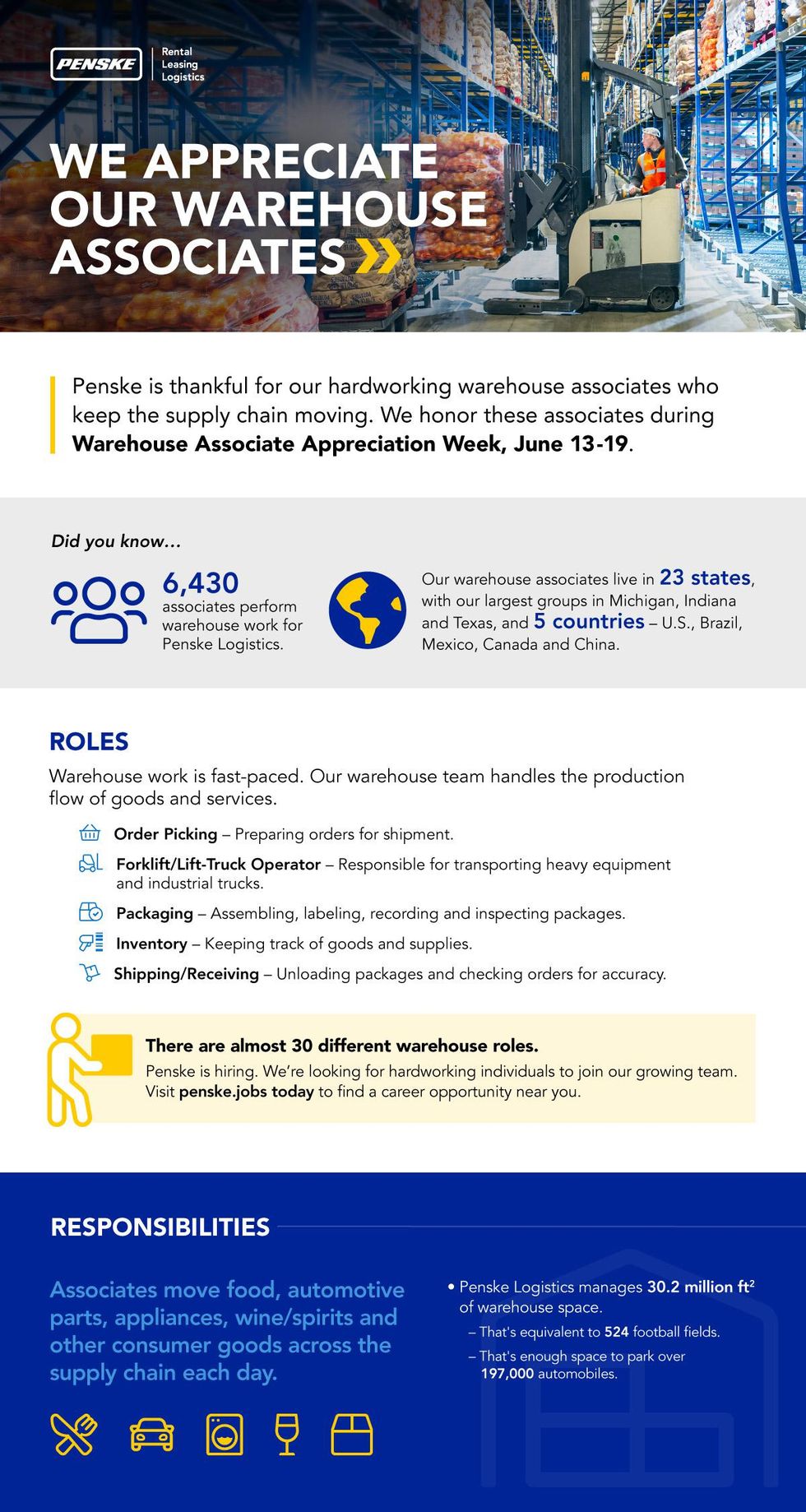Technology is advancing rapidly, and new solutions continue to become accessible. The key is knowing what can optimize operations and provide value today versus what will be available in the next few years. It is crucial to be able to narrow down options in a rapidly growing technology landscape to the most relevant and reliable technology.
Collaborative Robotics
Human-assist robotics, also called collaborative robots or “cobots,” can automate movement, storage, and retrieval of goods in a warehouse while working alongside and in conjunction with people.
New technology and sensors enable robots to adapt to their surroundings, making them safer than previous versions that would continue with their work no matter what. Cobots operate at a slow, controlled speed, and if they bump into something, they act like a human and reset or move around it.
Cobots can help improve the working environment by automating physically demanding or repetitive tasks. Manual repetitive labor — like picking up a box and moving it from a conveyor to a pallet over and over again — isn’t interesting to humans, but it is something a robot is good at. Cobots can work three shifts a day and not get tired, injured or call out sick. More importantly, they provide opportunities for facilities to upskill their workforce, so people can focus on what they’re good at and engage in more meaningful work.
Similarly, automated guided vehicles (AGVs) can move pallets or other inventory throughout the warehouse alongside human workers. AGVs have been used for over 20 years and are trained to run the same pattern and do as they are programmed, remembering the path they must use to complete a movement, including a concept of gamification that appeals to another labor force demographic. Likewise, autonomous mobile robots (AMR) use a more advanced navigation system with the ability to create their own optimal routes using LIDAR mapping technology, similar to self-driving cars.
One of the challenges with AGV, AMR, and cobots is that if something goes wrong, operations are shut down until someone can physically diagnose the issue on the floor. However, new technology enables people to control and monitor vehicles from thousands of miles away via remote access. Robot ambassadors can remotely log in to any vehicle having an issue, which increases efficiency by as much as 70%.
The ability to work from anywhere and handle more complex issues can make work more attractive. The goal for facilities is to build an engaged and committed workforce while improving safety.
Automated Sorting, Storage and Retrieval Systems
Automated sorting, storage and retrieval systems use sensors, conveyor belts, robotic arms or other technology to categorize and organize incoming goods and aid in their retrieval. These systems excel in speed and accuracy, ensuring that products are quickly and correctly sorted, leading to faster picking, packing and processing.
Another type of automation system is a robotic goods-to-person solution. Rather than a person retrieving products on foot, the goods come to them. A worker can stand in one spot, and goods-to-person technology picks and delivers the items. The solution is excellent for small items and effective in freezers as low as negative 20 degrees Fahrenheit.
Artificial Intelligence and Machine Learning
Artificial intelligence (AI) and machine learning (ML) can improve, automate and streamline operations. An AI tool with ML capability will understand and recognize anomalies and improve forecasting near real-time, making operator decision-making more data-driven than emotional. The technology can act faster than a human and is an excellent tool for providing a system-wide status at a glance.
By seeing the status of operations in real-time, warehouses can adjust as necessary to reduce the risk of disruptions. For example, AI could tell a supervisor if they are 20 minutes behind in one area and 20 minutes ahead somewhere else and then make recommendations on how to adjust labor.
Similarly, a smart dashboard could review the last 30 days of data and identify what is working well, what isn’t and how to adjust. AI and ML can also automate reports, invoicing and labor management.
Computer Vision
Computer vision technology can capture data on freight as it passes through the dock door, enter data into critical operating systems, and create a workflow that automatically adapts to changing conditions while adhering to warehouse business rules.
The receiving process is a very manual portion of warehouse labor. Computer vision can capture SKU data, manufacturing dates and expiration dates as products move from the trailer door to the warehouse. Expiratory information is beneficial for directing where products should be stocked or picked.
This information can also be cross-referenced to ensure accuracy. For example, it can compare information on incoming freight with financial information and advanced shipping notices and flag any discrepancies.
Computer vision differs from RFID or Bluetooth scanning technologies, which rely on readers and chips, but scanning technology still has a place in certain applications, such as sensing containers and their contents as they move around a facility.
Customized containers or specially engineered racks are often a critical component of a manufacturer’s supply chain and have to be tracked across the entire network. This is why it’s critical to have product in the right place at the right time to avoid disrupting production.
Business Process Automation
One opportunity warehouses are utilizing is business process automation to proactively identify ways to eliminate mundane human tasks and drive efficiency. For example, as a part of the EAC Program (Eliminate, Automate, Centralize), Penske Logistics has been driving process automation to help teams automate daily tasks that they execute on the systems. These can be replicable, logic-based tasks that are programmed into a bot to execute at desired intervals.
Business process automation is easy to deploy, saves time, and enables warehouse administrative associates and supervisors to shift focus to other critical areas with their teams or customers.
Calculating a Return on Investment
Warehouse operators expect new technology to provide value and generate a timely return on investment. More and more technology is available as a service model or via leasing, which helps speed up the ROI. Penske works with our customers to approach capital-intensive investments through a variety of flexible options.
Through research and analysis, Penske aligns all innovation and technology with each business’s needs to provide maximum value through a practical approach that focuses on proven technologies with long-term success. Contact us today to learn more.



 Cristy Sinclair, Penske Logistics director of food safety, has been recognized as a 2022 Rock Star of the Supply Chain by Food Logistics magazine.
Cristy Sinclair, Penske Logistics director of food safety, has been recognized as a 2022 Rock Star of the Supply Chain by Food Logistics magazine.